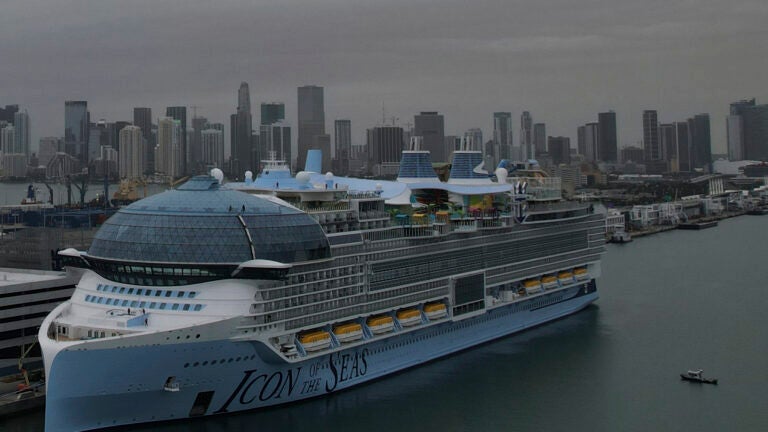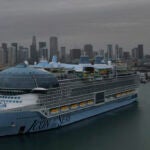Jail cells? Morgues? Your cruise ship has some surprises for you.
Here are five unexpected features on ships, some of which you hopefully won’t discover on your own.

Cruise ships have hidden features that many passengers, particularly first-timers, don’t know about. Some ships are as big as small cities, and while it’s relatively easy to familiarize yourself with a seemingly endless number of amenities — water parks, tattoo parlors, multiple restaurants — there is also an entire ecosystem, often below passenger decks, that is shrouded in mystery.
Here are five things that cruisers may not know about cruise ships:
There’s a morgue …
Cruise ships carry millions of passengers each year, and it is not uncommon for deaths to occur on board. Most vessels are required to have a morgue and additional body bags in the event of an emergency.
The morgue, usually a small stainless steel refrigerated room on the ship’s lowest deck, accommodates between two to 10 bodies, depending on the size of the vessel. When a passenger or crew member dies, officials on the ship will notify authorities on shore, and a medical team will assess the body and move it to the morgue, where it is kept until arrangements are made for repatriation. In most cases, the body will be removed at the next port of call but sometimes will remain on board until the end of the voyage.
… and a jail
There are no police officers on cruise ships, but most vessels have small jails known as the brig, and unruly passengers could find themselves locked up if the ship’s security team determines that they have violated the cruise line’s code of conduct.
The brig, usually a bare-bones room with a bed and bathroom facilities, does not have iron bars like a traditional jail cell. It is used to detain guests who commit serious crimes such as assault or possession of illegal substances. Drunk and disorderly passengers may be put under “cabin arrest,” meaning they cannot leave their cabin without a security escort.
Depending on the circumstances, most passengers put in the brig will stay there until they can be handed over to law enforcement officials.
Many ships don’t have a Deck 13
Many cruise ships do not have a Deck 13 because of the widespread superstition in Western culture that the number is unlucky. Ships with a Deck 13 typically use it for public areas, not cabins.
Some ships, such as Royal Caribbean’s Quantum class vessels, have a Deck 13 because the vessels are used mainly for the company’s market in Asia, where the number is not considered unlucky. MSC ships also have a Deck 13, but not a Deck 17, because the cruise line’s founder is Italian, and 17 is considered unlucky in Italy.
Cruise lines entertain other superstitions, such as appointing godmothers to bless new vessels and ensure the safety of passengers and crew. They also hold naming ceremonies in which a bottle of sparkling wine is smashed against the hull of a new ship for good luck. If the bottle fails to break, the vessel will, according to superstition, have bad luck. These days, cruise lines use mechanical devices to ensure that does not happen.
Hidden pools and facilities for the crew
There are typically more than 1,000 crew members on board large cruise ships, and while they spend most of their time serving passengers, there are several areas on the lower decks designated for them to unwind.
The facilities vary from ship to ship, but there are usually small pools in the ship’s bow exclusively for crew members, as well as restaurants, bars and recreational areas such as game rooms and gyms. The designated bar, a central social hub for employees after they have finished their shifts, often hosts live music and events in the evening.
Royal Caribbean’s Icon of the Seas, the world’s largest cruise ship, has an entire “neighborhood” dedicated to its 2,300 crew members, with a clubhouse that has massage chairs and virtual balconies — large screens that show real-time views from outside — as well as a restaurant with portholes looking out to the ocean.
Most ships host AA meetings
With all-inclusive beverage packages and countless bars, cruise ships can be a tough environment for guests in recovery. Many cruise lines offer daily Alcoholics Anonymous meetings that are usually scheduled as “Friends of Bill W.,” a reference to William Wilson, who co-founded the AA program in 1935.
The meetings are usually held in a quiet place such as the library, where guests can feel comfortable and maintain their anonymity. They are also open to other support group members, such as Women for Sobriety and Narcotics Anonymous.
This article originally appeared in The New York Times.







Conversation
This discussion has ended. Please join elsewhere on Boston.com